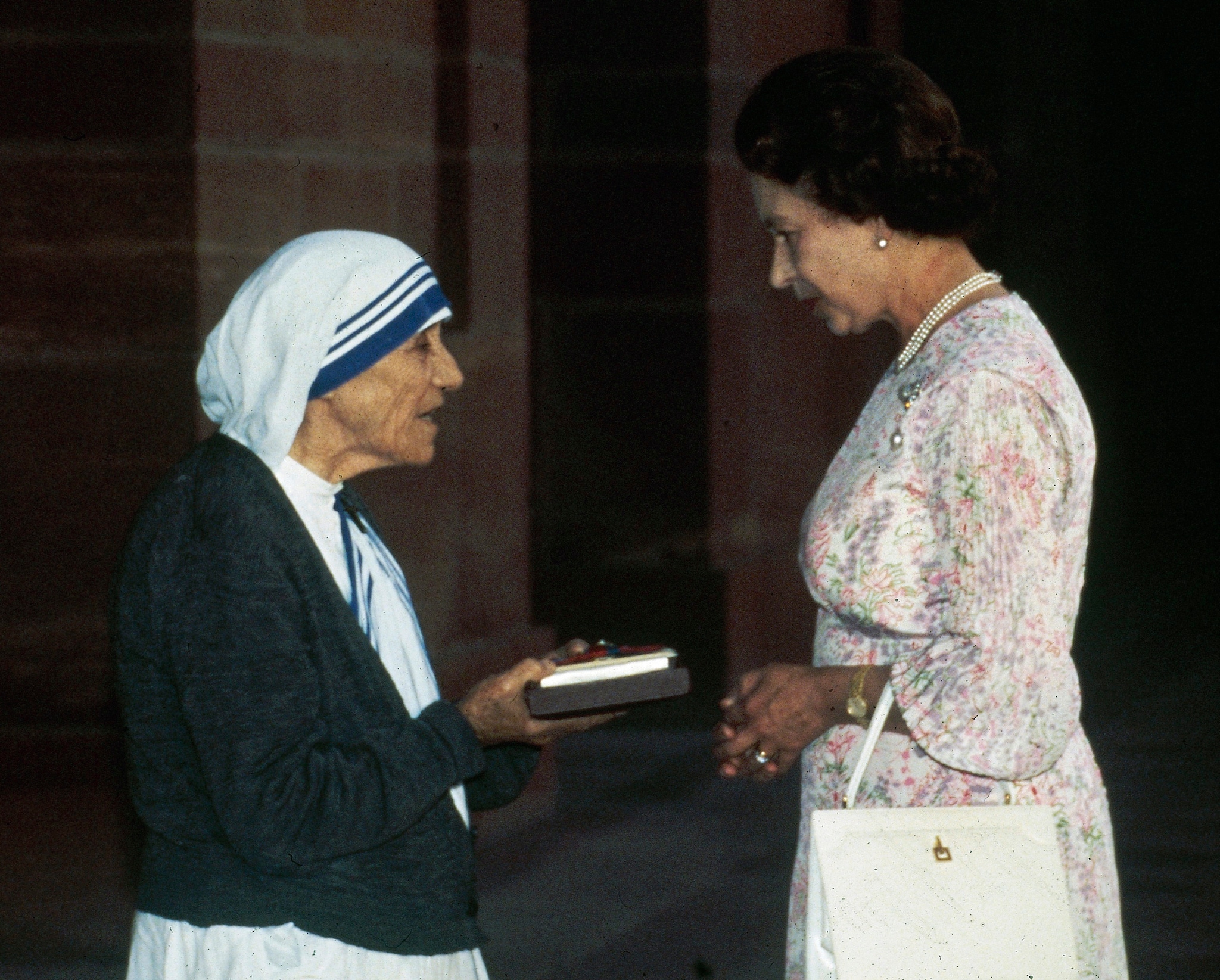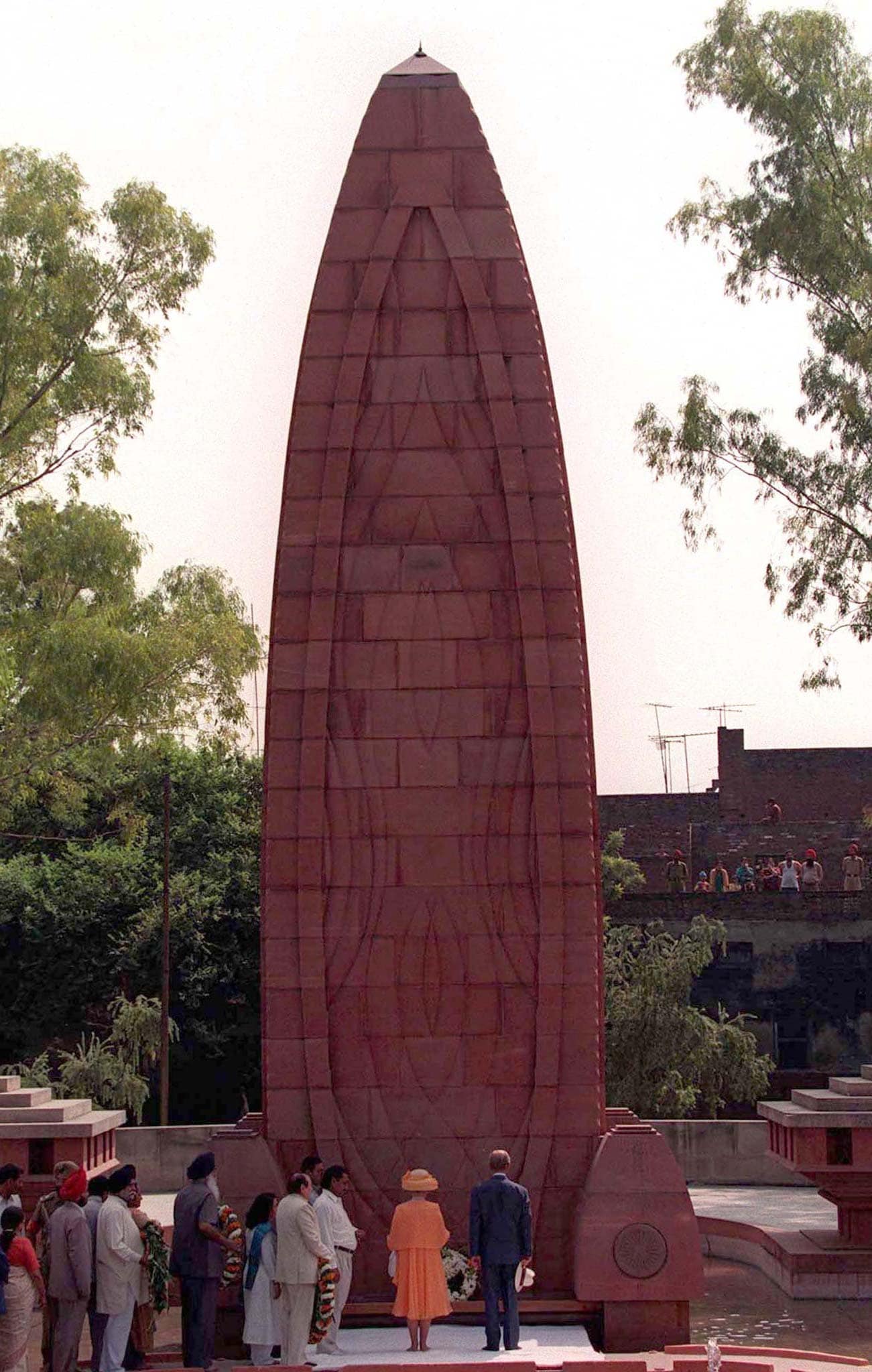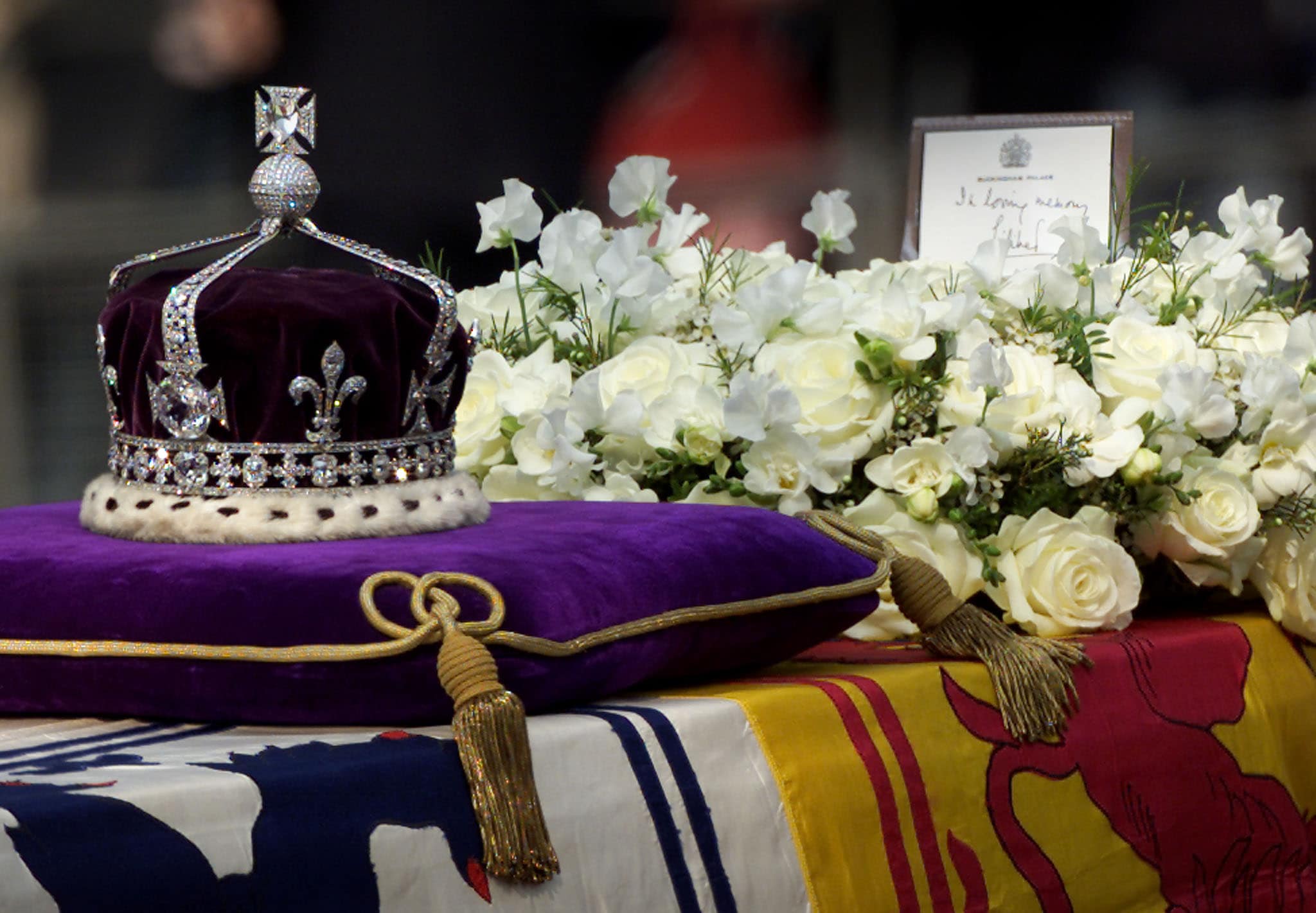Britain’s Queen Elizabeth II started her reign in 1952, five years after India gained Independence from the vast colonial empire she headed. The British monarch, who died on Thursday passing the crown to son Charleswas known to nurture a special fondness for India. This bond was furthered by her proximity to Louis Mountbatten, the last Viceroy of India and her husband Prince Philip’s maternal uncle who steered his nephew into the British royal family.
While she enjoyed the warmth and hospitality of the Indian people on these visits, the relationship was not without its dark episodes, alluded to by the Queen herself in speeches.
Her death, ironically, came on a day the Indian government renamed the iconic Rajpath to Kartavya Path. The ceremonial boulevard running from the Raisina Hill complex to India Gate had started its journey as Kingsway, built after the imperial seat of the administration was shifted from Calcutta to Delhi under the reign of Elizabeth’s grandfather King George V in 1911. It was on this boulevard that the Queen and her husband Prince Philip witnessed India’s Republic Day Parade as Guests of Honour during their first royal visit in 1961.
The Queen is Coming
Queen Elizabeth II undertook three State Visits to India. In January 1961, the Queen and her husband, the late Prince Phillip, toured Bombay, Madras and Calcutta (now Mumbai, Chennai and Kolkata) and also visited the Taj Mahal in Agra and paid tribute to Mahatma Gandhi at Rajghat in New Delhi. This was her first royal visit to India, seven years after her coronation in June 1953.
They were Guests of Honour at the Republic Day Parade on the invitation of the then President, Dr Rajendra Prasad. An enduring image from the tour shows the Queen addressing a massive crowd of several thousand people packed into Ramlila Grounds in Delhi, with India’s first prime minister Nehru and Prince Philip also present on the dais.
Thousands cheered and waved small flags of both countries as the royal couple were felicitated by the then mayor of Delhi Sham Nath on a huge elevated oriental-style rostrum, with ceremonial Indian garlands. The queen was gifted an artistic model of 12th-century minaret Qutub Minar, while the Duke of Edinburgh received a silver candelabra.
On January 27, 1961, she also formally opened the institute buildings of the All India Institute of Medical Sciences at a ceremony attended by the then president Rajendra Prasad. AIIMS was established in 1956.
A plaque commemorating the event still stands on a pillar inside the JL Nehru Auditorium building, and on its diamond jubilee in 2016, some of the rare images from her visit to the premier institute were displayed in an exhibition hosted on the campus.
In 1983, Queen Elizabeth’s visit was in time for the Commonwealth Heads of Government Meeting and she famously presented Mother Teresa with an honorary Order of the Merit.

Her final visit to India in 1997 was to mark the 50th anniversary celebrations of India’s Independence and for the first time she made a reference to difficult episodes of colonial history.
Jallianwala Bagh: Regret But No Apology
Multiple British prime ministers and envoys to India have expressed “regret” over one of the British Empire’s bloodiest episodes in India and have laid wreaths in Amritsar at the scene of the notorious massacre of unarmed civilians. But no representative of the Crown or government has issued a direct apology for the Jallianwala Bagh massacre of 1919.
Queen Elizabeth referenced the slaughter, described by Mahatma Gandhi as having shaken the foundations of the British Empire, during her 1997 visit to India.
“It is no secret that there have been some difficult episodes in our past. Jallianwala Bagh is a distressing example,” the monarch noted in her banquet address.
She and her husband later paid a visit to the scene of the massacre in Amritsar to place a wreath at the memorial amid widespread calls for an apology for the thousands killed during a Baisakhi gathering at the orders of General Dyer on April 13, 1919.

Sukumar Mukherjee, secretary of the trust that takes care of Jallianwala Bagh Memorial, remembers the Queen visiting the scene and paying tribute to the dead, but stopping short of offering an apology.
Many had expected her to offer an apology then on behalf of her country, but that didn’t happen. Instead, an insensitive remark reportedly made by Prince Philip, questioning the fatality count of the massacre, upset many Indians.
But Mukherjee says the visit itself was significant. “I think when she came to the Jallianwala Bagh here she paid respect to the martyrs and she also observed a minute of silence. It is not a minor thing that the Queen of a country does that and I think it was more than an apology,” he has been quoted as saying by news agency PTI.
But for Mahesh Behal, whose grandfather Lala Hari Ram Behal was killed at Jallianwala Bagh, the gesture amounted to nothing.
“The visit of the Queen in 1997 to Jallianwala Bagh was meaningless without her expression of apology. During her visit to the place of martyrs, she should have directly offered an apology but she never did so,” he says.
“When she arrived in India in 1997, a large group from the families of freedom fighters from Amritsar went to Rajghat in Delhi, where we all sat on a hunger strike and said that without an apology her visit to Amritsar will remain meaningless,” recalls Behal.
In April 1919, when the centenary of the massacre was observed, the UK government flagged “financial implications” as one of the factors it had to consider while reflecting upon demands for a formal apology.
Then UK Foreign Office minister Mark Field said during a debate on “Jallianwala Bagh massacre” at Westminster Hall in the House of Commons complex that while it was important to draw a line under the past over the “shameful episode” in history, repeatedly issuing apologies for events related to the British Raj came with their own problems.
“I have slightly orthodox views on Britain’s colonial past. I feel little reluctant to make apologies for things that have happened in the past… There are also concerns that any government department has to make about any apology, given that there may well be financial implications to making an apology,” he had said.
“I feel we perhaps debase the currency of apologies if we are seen to make them for many, many events.”
Quest for Kohinoor
The death of Queen Elizabeth has also rekindled the demand for the return of the Kohinoor diamond to India. With her son Prince Charles succeeding to the throne, the 105-carat diamond, which is steeped in history, will go to his wife Duchess of Cornwall Camilla, who has now become Queen consort.
Kohinoor, or ‘Mountain of Light’, is a large, colourless diamond that was found in southern India in the early 14th century. The precious gem, which came into British hands during the colonial era, is the subject of a historic ownership dispute and is claimed by at least four countries, including India.
The Kohinoor diamond was “surrendered” by the Maharaja of Lahore to the then Queen of England and “not handed over” to the British nearly 170 years ago, the Archaeological Survey of India replied to an RTI query a few years ago.
However, the Indian government’s stand in the Supreme Court was that the diamond, estimated to cost over $200 million, was neither stolen nor “forcibly” taken by British rulers but given to East India Company by erstwhile rulers of Punjab.

In the book An Era of DarknessShashi Tharoor noted that it was once touted to be the world’s largest diamond, weighing 793 carats or 158.6 grams. The diamond is believed to have been first mined near Guntur in Andhra Pradesh by the Kakatiya dynasty in the 13th century.
From its original glory of 158 carats, the diamond has been whittled down to its present 105 carats form over the centuries. Tharoor notes the popular jewel’s journey through royal hands as it passed from the Kakatiyas in the Deccan to Delhi Sultan Alauddin Khilji and then to the Mughal empire. It reached Afghanistan with Persian invader Nadir Shah.
Legend has it that it was Nadir Shah who named the diamond the Kohinoor. It passed through different dynasties before landing in the possession of the Sikh Maharaja of Punjab, Ranjit Singh, in 1809, Tharoor noted.
He claims that Ranjit Singh’s successor could not hold on to his kingdom and was defeated by the British in two wars. “That was when the Kohinoor fell into British hands.”
Tharoor penned a poignant argument in favour of the diamond’s return to India and made critical remarks against the UK’s colonial history. “Flaunting the Kohinoor on the Queen Mother’s crown in the Tower of London is a powerful reminder of the injustices perpetrated by the former imperial power. Until it is returned at least as a symbolic gesture of expiation it will remain evidence of the loot, plunder and misappropriation that colonialism was really all about,” he said.
Author and historian William Dalrymple noted in his book, Kohinoor that child Sikh heir Duleep Singh regretted having surrendered the jewel to Queen Victoria.
“I would give a good deal to hold it again in my own hand. I was but a child, an infant, when forced to surrender it by treaty… Now that I am a man, I would like to have it in my power to place it myself in Her Majesty’s hand.”
The government has made demands for Kohinoor’s return on several occasions with one as early as 1947. However, the British government over the years have rejected the claims.
On his visit to India in July 2010, then UK prime minister David Cameron said, “If you say yes to one you suddenly find the British Museum would be empty. I am afraid to say, it is going to have to stay put.”
Those who have been calling for the diamond’s return were let down in 2016 when responding to a public interest litigation then Solicitor General of India Ranjit Kumar told the Supreme Court that the Kohinoor was “given voluntarily by Ranjit Singh to the British compensation for help in the Sikh wars”. “The Kohinoor is not a stolen object,” he had said.
Then Culture Minister Mahesh Sharma later ruled out any action by his ministry to bring back the famed diamond, saying that if any call on the matter needs to be taken, it will be at the diplomatic level.
Read all the Latest News India and Breaking News here